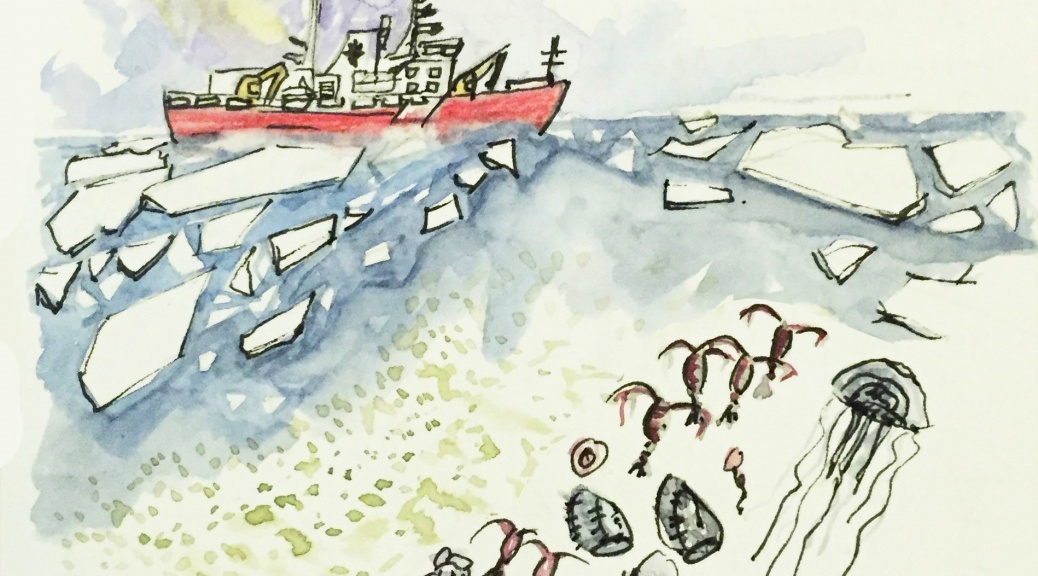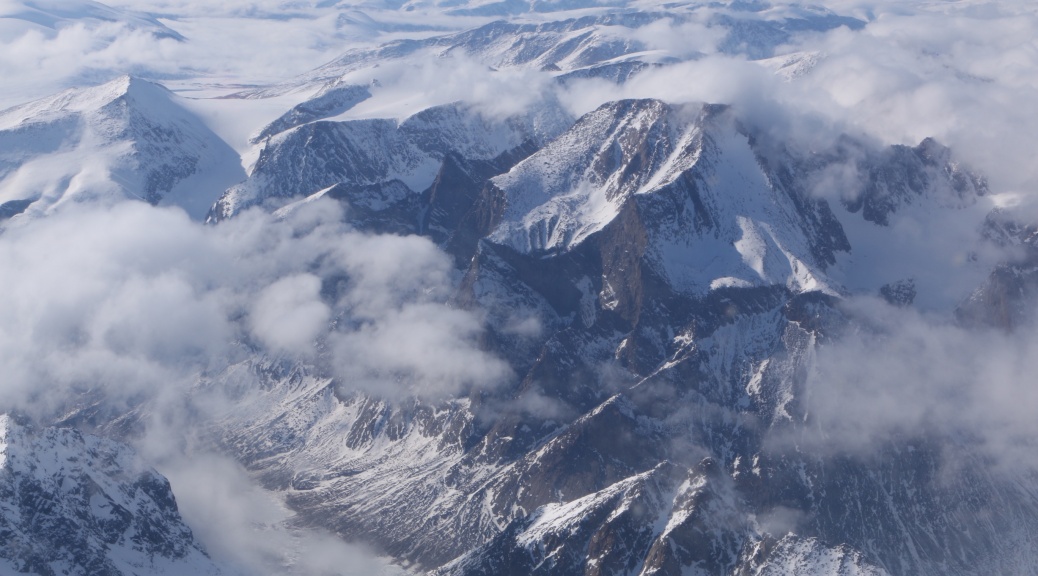In Brazil, the country in which I was born, a popular proverb states “Saco vazio não para em pé!”, which means “an empty bag won’t stand”. It is widely use by parents to kids to illustrate the importance of a meal and usually a good meal. Chips and chocolates do not fill up the bag. Thousands of kms from Brazil, during the ice camp expedition, I had no problem to fill up “the bag” or “biddon” as we said many times at the camp…
Tag Archives: Green Edge Team
Extreme icebreaker and floating village
The Amundsen, giant of the seas…
Spending three weeks onboard the CCGS Amundsen in Baffin Bay is a unique experience… The icebreaker’s mission since 2003 is to provide the logistics for scientific campaigns and allow access to the inhospitable waters of the Arctic Ocean. The ship uses its weight (8171 tons ) and thrust to crush the sea ice. It is powered by six diesel engines totaling 15,000 horse power to progress in thick icepacks often exceeding 1 meter. It feels like being constantly in a magnitude 2 earthquake. Many times on this trip I pondered: How can men build such amazing vessels? The design, operation, and navigation are fascinating.
Cloud cover: our enemy
Most marine-optics scientists dislike cloud cover. Thick clouds hiding the water surface in the visible and near-infrared spectral region prevent them to get nice ocean color remote sensing images. Thin clouds may lead to inaccuracies in the atmospheric correction when retrieving water reflectance from the sensor, which measures top-of atmosphere reflectance. On field, cloudy skies makes it often hard to adequately retrieve some water optical properties, namely those affected by the environment, the so-called apparent optical properties. Clouds also alter the diffuse and direct sunlight making it more challenging to interpret the water, ice and snow surface reflectance. But in addition to prevent some good sciences, cloud cover also triggers some unexpected GreenEdge (mis)adventures.



